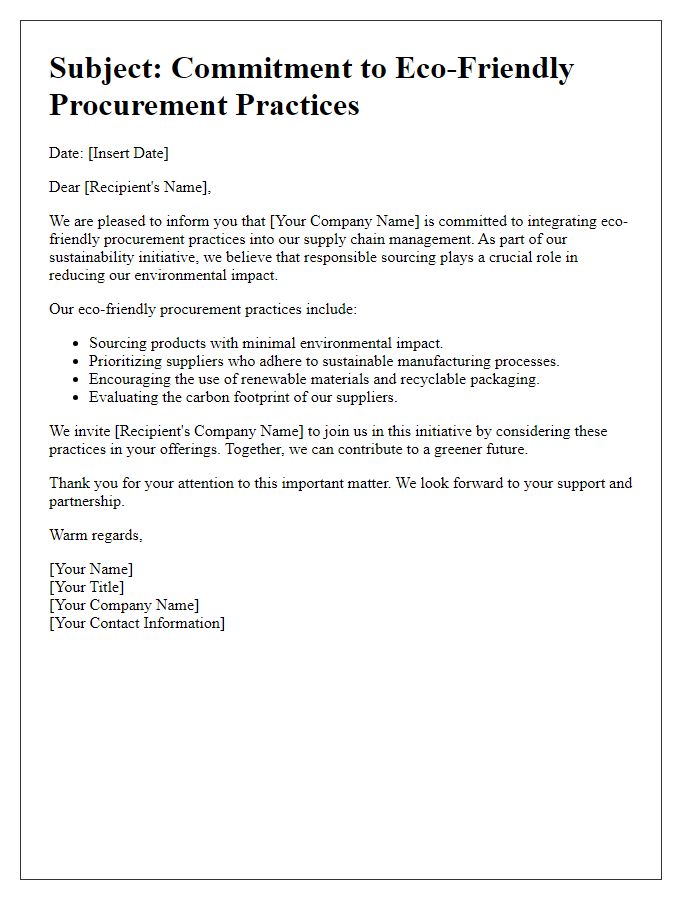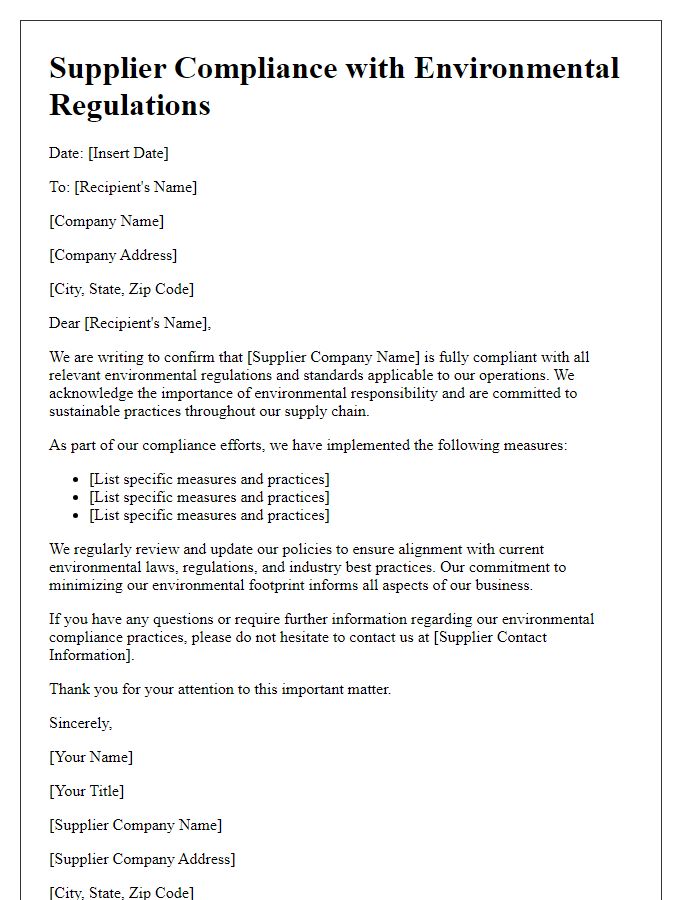In today's world, sustainability is more than just a buzzword; it's a vital part of our collective responsibility towards the planet. As suppliers, understanding and implementing sustainability reporting standards can not only enhance your brand's reputation but also foster deeper trust with your partners and customers. By adhering to these standards, you can showcase your commitment to ethical practices and environmental impact reductions. Ready to dive into the specifics of supplier sustainability reporting? Read on to learn more!

Alignment with Global Standards
Supplier sustainability reporting standards are essential for aligning with global frameworks like the Global Reporting Initiative (GRI) and the Sustainability Accounting Standards Board (SASB). These frameworks encourage rigorous data collection and transparent reporting on key performance indicators, such as carbon emissions and resource usage. Compliance with standards like the UN Sustainable Development Goals (SDGs) further enhances credibility and demonstrates commitment to responsible practices. Furthermore, suppliers are encouraged to adopt the Task Force on Climate-related Financial Disclosures (TCFD) recommendations, which guide companies in disclosing climate-related financial risks, promoting investor confidence and sustainability in operations. Engaging suppliers in workshops and training on these standards ensures consistent understanding and execution of sustainability goals across the supply chain.
Supplier Environmental Commitments
Supplier environmental commitments play a critical role in establishing sustainable practices within supply chains. These commitments encompass initiatives aimed at reducing greenhouse gas emissions, conserving water, and minimizing waste across operations in various industries, including manufacturing and agriculture. Key metrics, such as carbon footprint reduction targets measured in metric tons and waste diversion rates highlighted in percentages, are often integrated into sustainability reports. Market leaders emphasize transparency by ensuring adherence to guidelines set forth by organizations like the Global Reporting Initiative (GRI) and the Sustainability Accounting Standards Board (SASB). Ensuring compliance with these standards enables suppliers to contribute effectively to environmental stewardship and demonstrate accountability to stakeholders.
Social Responsibility Practices
Supplier sustainability reporting standards emphasize social responsibility practices that ensure ethical treatment of workers. Compliance with guidelines such as the International Labor Organization (ILO) conventions is critical. These standards require suppliers to implement fair labor practices, promoting worker rights, and preventing child labor or forced labor in operations. Reporting metrics include workforce demographics, employee satisfaction surveys, and diversity initiatives aimed at fostering an inclusive workplace. Furthermore, suppliers should document training programs provided to employees, ensuring health and safety standards, such as maintaining a safe work environment with adequate emergency protocols. Adherence to these practices not only contributes to corporate social responsibility (CSR) goals but also enhances brand reputation and stakeholder trust in various markets.
Compliance Verification Processes
Supplier sustainability reporting standards assess compliance verification processes through various key metrics. Specifically, these standards often include guidelines from recognized frameworks like the Global Reporting Initiative (GRI) and the Sustainability Accounting Standards Board (SASB). Evaluation criteria typically encompass environmental impact assessments, social responsibility measures, and economic performance evaluations. Suppliers are expected to document adherence to regulations such as the ISO 14001 environmental management standard, which focuses on effective resource management and waste reduction. The verification process frequently requires third-party audits, ensuring transparency in reporting and fostering trust among stakeholders. Additionally, compliance metrics may involve regular employee training programs, fostering a culture of sustainability within the organization.
Performance Measurement Metrics
Supplier sustainability reporting standards encompass various performance measurement metrics aimed at evaluating environmental, social, and economic impact. These metrics include carbon footprint assessments measured in CO2 equivalent emissions (typically expressed in metric tons), waste management effectiveness, and water usage statistics captured in cubic meters. Additional data points, such as employee satisfaction surveys conducted annually, can indicate social responsibility. Compliance with industry standards such as ISO 14001 for environmental management systems further validates sustainability efforts. Financial performance metrics may include return on investment (ROI) for sustainability initiatives, which increases transparency and accountability in supplier partnerships, ultimately fostering long-term sustainability goals.
Letter Template For Supplier Sustainability Reporting Standards Samples
Letter template of communicating supplier sustainability program updates













Comments